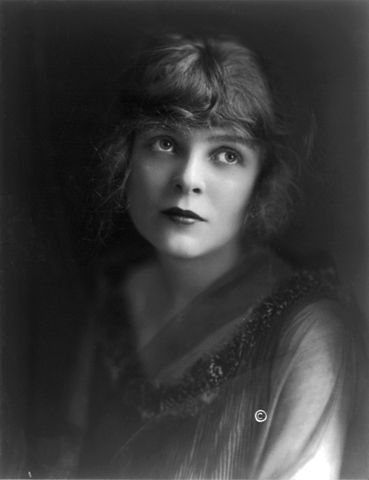 |
| D. W. Griffith, c1925 |
The
directing career of D. W. Griffith (1875-1948) began with Thomas Edison’s
company Biograph, where he made the one- and two-reelers that the New
York-based filmmaking Trust permitted. Two early westerns, made in California,
are his Fighting Blood and The Last Drop of Water, both released
in 1911.
The
first is set in Dakota Territory and concerns an Indian attack on a settler's
cabin. The second tells of a wagon train, facing various perils, including
another Indian attack and running out of water. In a melodramatic resolution of
this latter problem, one man dies and is left behind.
 |
| Poster, The Battle of Elderbush Gulch |
His
final film before leaving Biograph was a two-reeler western, The Battle of
Elderbush Gulch (1914). This film featured yet another Indian attack and
rescue by the cavalry. It starred Mae Marsh and Lillian Gish. After that, given
the freedom to make the monumental feature-length films he had in mind, Griffith produced
Birth of a Nation (1915) and his big-budget 3.5-hour epic historical drama,
Intolerance (1916).
According
to film historian Jon Tuska, what Griffith brought to the western were filming
and editing techniques that would make the story more exciting for the
audience. As one example, he advanced the art of crosscutting, taking us back
and forth between two different threads of action.
An
earlier one-reeler, The Lonedale Operator
(see below), illustrates his technique of crosscutting, as a telegraph operator
(Blanche Sweet) is threatened by two men trying to steal a mining company
payroll that has been dropped off at her station from a passing train. As the two men attempt to break in, she desperately sends for help by telegraph, and a
railroad locomotive engineer (Francis J. Grandon) races to rescue her.
What to look for. The situation has a leisurely set up in the film’s opening minutes as Grandon gets orders delivered by a boy on a bicycle. Greeting the demure Sweet, he flirts
with her before each goes to work for the evening. Notice Griffith’s use of
framing in this scene as he films the couple in front of an overhanging curtain
of a tree’s leafy branches. Sweet then shows up at the depot where her father,
the station agent, leaves because he has been taken ill.
 |
| Blanche Sweet, c1915 |
The
pace begins to pick up as Griffith films several railway employees along a
train platform, filling the frame with activity while emphasizing the spatial
depth, as men work at different tasks, in both the foreground and background.
Later he suggests the arrival of night with the use of tinted stock.
Then
the pace quickens again as the two robbers appear, lurk around the station, and
arouse Sweet’s suspicion. Suspense builds as her efforts to reach help by
telegraph fail to wake a sleeping operator at another station, as we are shown with more crosscutting.
Before
Grandon finally arrives to put a stop to the robbery, there has been a rapid
succession of shots from inside the Lonedale station and both on the train and
alongside the tracks as the train speeds by. There is even a neat trick as the
film creates the illusion of turning off a light in an interior scene by
switching from black-and-white to tinted stock.
Here is the complete (16:49) film.
For more Overlooked movies and TV, click over to Todd Mason’s blog, Sweet Freedom.
Image credits:
Wikimedia Commons
Coming up: TBD
I so enjoy watching silent films and this is one I've missed. Thanks, Ron.
ReplyDeleteRather melodramatic, of course. Good quality of the film after all these years.
ReplyDeleteRealy enjoy the things you find and present, Ron.
ReplyDeleteWhen I look at old black-and-white pictures, like that of D.W. Griffith, and vintage posters like "The Battle of Elderbush Gulch," I wonder if we inhabit the same world. Thanks for the review and the video link to the film, Ron.
ReplyDeleteI've heard the name, which is perhaps unusual for me since I pretty much know nothing at all related to movies or movie making.
ReplyDeleteThanks for the link. I have such a short attention span this 16 min movie was about right. Fun stuff.
ReplyDeleteEnjoyed this. Not only was it a good quality film, but the skill of the director/ editor really shows. Thank you for finding and sharing this. Doris
ReplyDelete